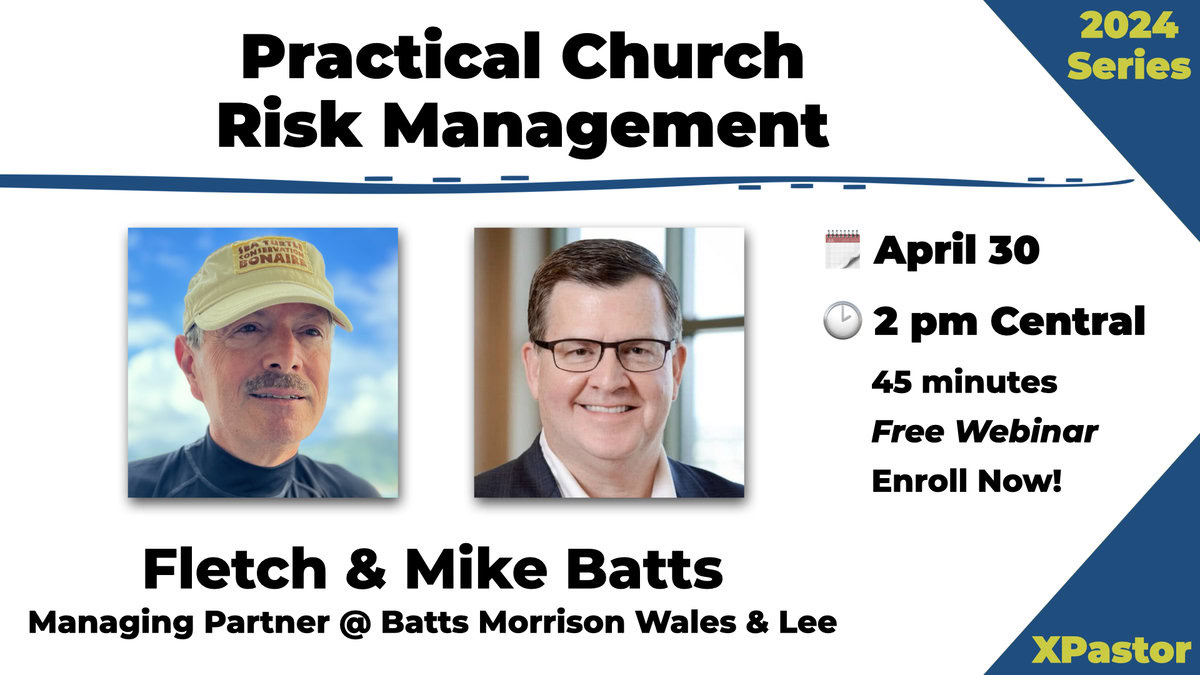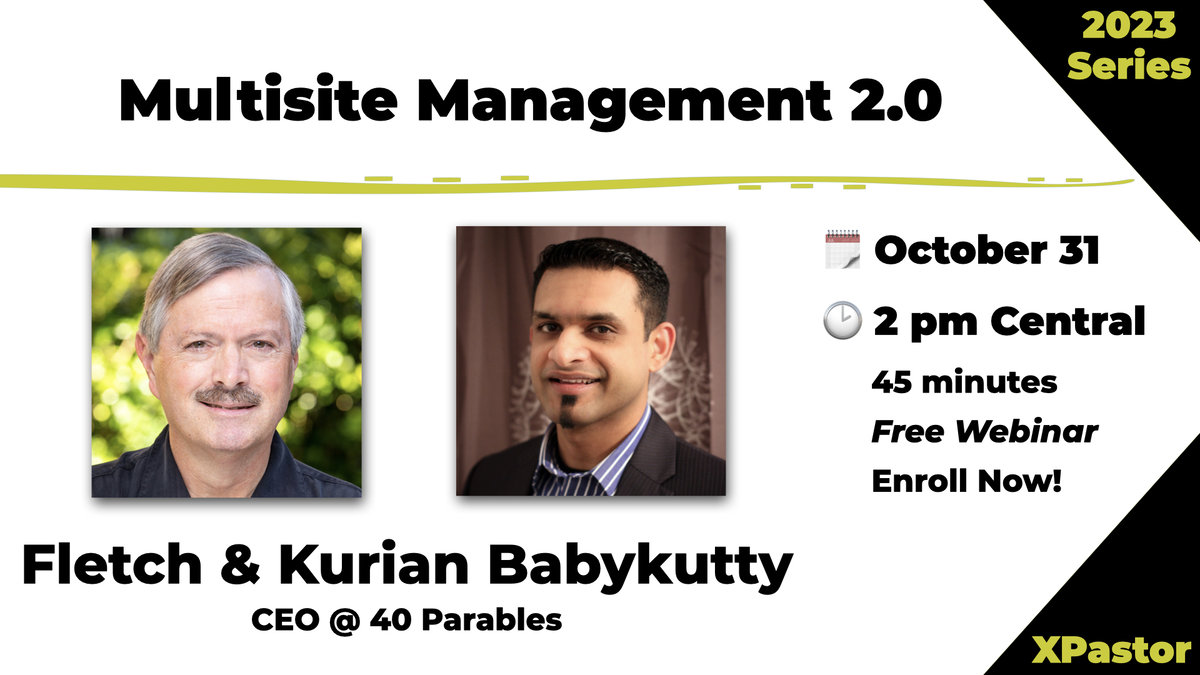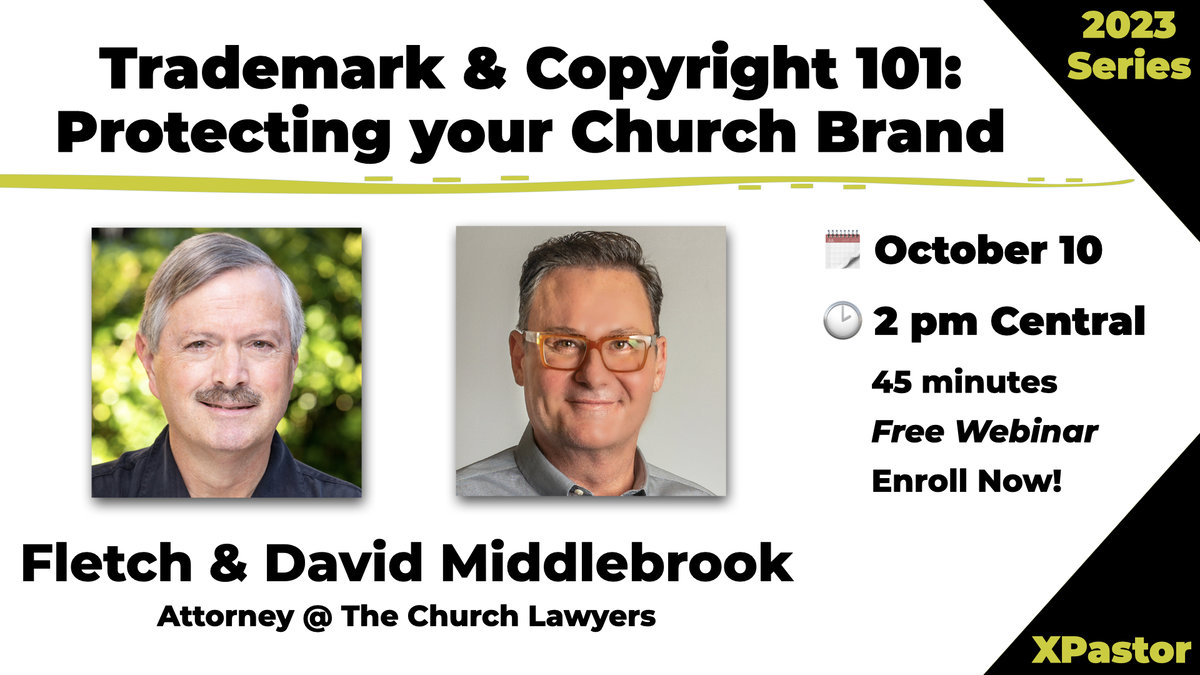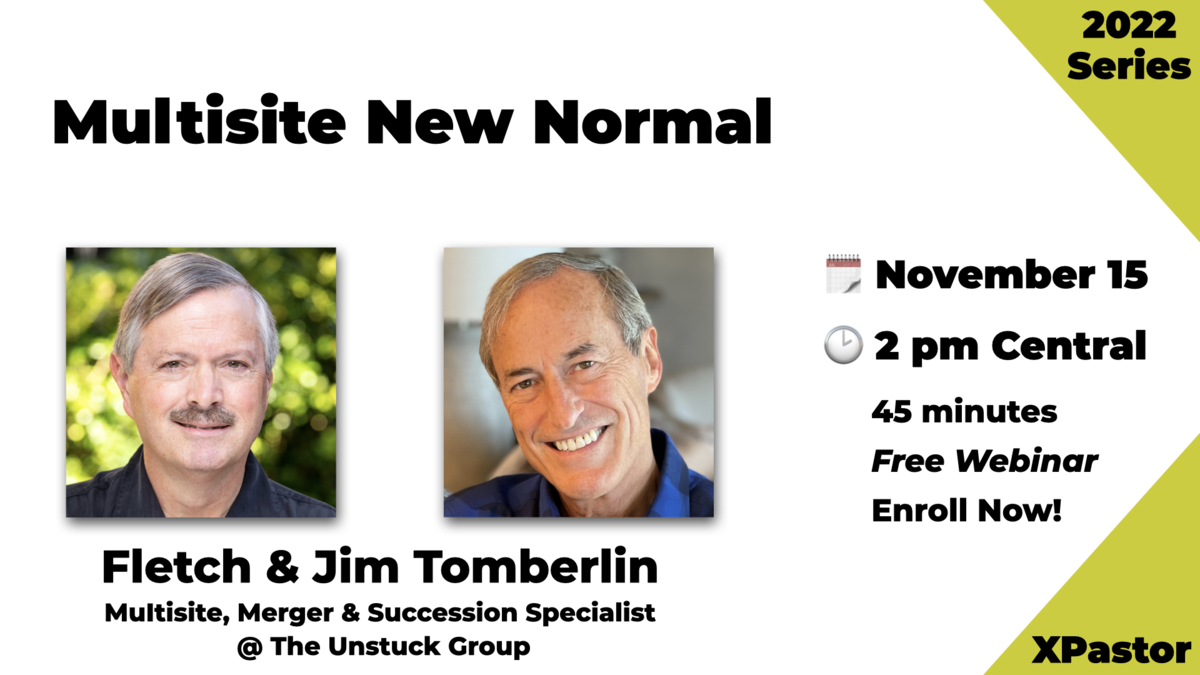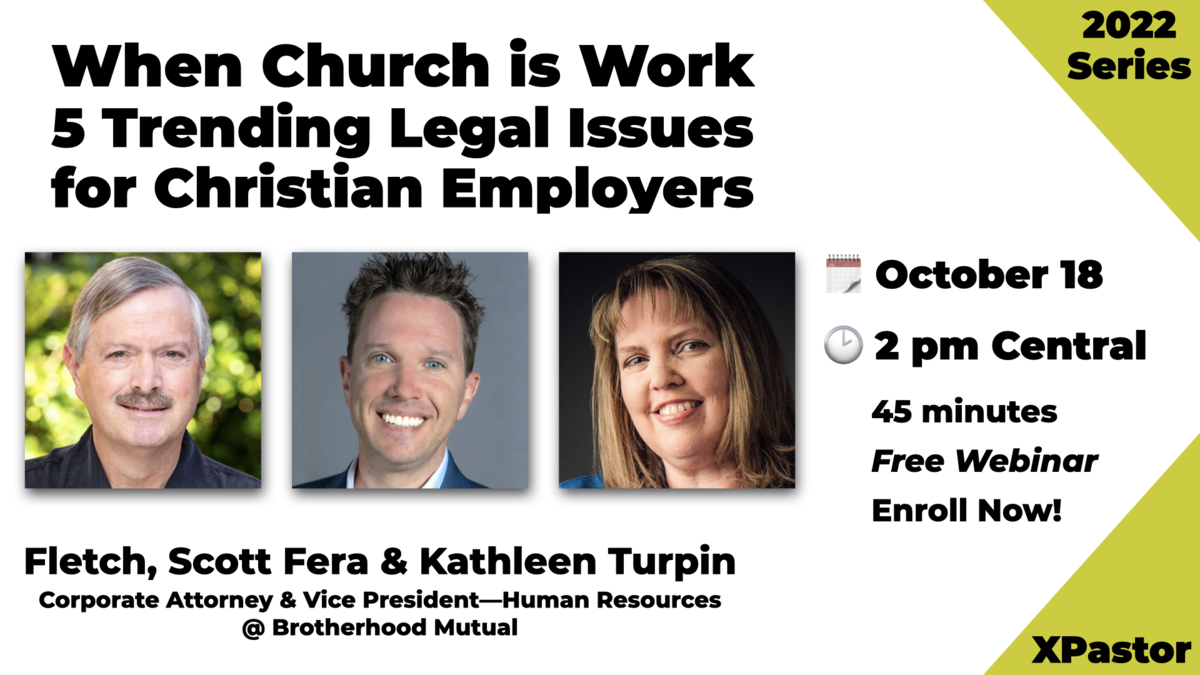Each year, thousands of U.S. churches—plus tens of thousands of others elsewhere around the globe—are sensing that they could fulfill their God-given mission better together than separately. They’re exploring new ways to join forces for the advancement of God’s Kingdom.
Mergers are happening with increasing frequency. And unlike in previous generations, many church mergers today are producing positive growth and admirable fruit. Increasingly, they are becoming a vehicle for unifying local congregations around a shared mission that is producing more effective spiritual and social impact.
In nearly all mergers, one church (the lead church) absorbs another (the joining church). The lead church is usually the larger congregation. The churches become one to achieve a common purpose: working together as a vibrant, healthy expression of Christ’s body, the church.
Questions to Ask
Mergers are complicated, and many issues must be addressed when undertaking one. Here are some of the questions you should ask before starting the merger process:
- Who has the legal authority to approve the merger? What happens if some members of the church aren’t on board with what’s going on?
- What rights do the people have who funded purchases of the land, facilities, and other assets of the joining church?
- What are the obligations of board members from the lead church and the joining church?
- How should moral obligations be handled, such as an earlier promise to the longtime secretary of the joining church, whose leaders had verbally promised that the church would take care of her in her retirement?
- Will there be a name change for one or both congregations? How will that be decided?
- How will the decision to merge be decided, and by whom? What do each church’s bylaws require? Will a congregational vote be required? If so, what will be the process and what percentage is required for approval? Even if not required, will a vote or poll be conducted as a way for the congregation to affirm their views? What is the lowest approval percentage the two churches are willing to accept?
- What will the new church entity do with any property and facilities gained in the merger? Will the property and facilities be kept or sold? What are the legal requirements and state laws for transfer of church property?
- What debt does either church bring to the merger? How manageable is it?
- When is the earliest possible date a merger could occur between the two churches? What are the things that need to happen, and by when, for a merger to occur?
- In short, how can the merger be done legally, morally, and ethically?
The answers to most of these questions are found generally in the Bible and specifically in each church’s governance documents, such as its articles of incorporation, constitution, and bylaws. The laws of the state and country of the merging churches should also be examined.
Many churches retain legal counsel to walk them through the intricacies of the merger process—and in most cases, it’s wisest for all parties to involve legal representation. Obviously, fees may vary depending on the attorney, but generally it is a small price to pay to ensure that all the legal bases are covered.
Five Reasons You May Need an Attorney
David Middlebrook, an attorney with Church Law Group, and an Editorial Advisor for Church Law & Tax Report, has provided merger-related legal counsel to hundreds of churches. Middlebrook emphasizes five critical aspects of a merger that may require the assistance of an attorney who specializes in church law:
Documents
Before the merger, look over the joining church’s corporate documents. Do they identify who has the power to authorize dissolution? Are there any reversionary clauses? Depending on what is found, the joining church may need to amend its corporate documents before it can merge, sell, or donate its assets.
Employees
What will happen to the employees of the joining church? In most cases, all employees who remain employees of the surviving entity will need to re-sign employment agreements. New background checks may be needed for those who work with children.
Real property
All land, buildings, and similar physical assets need to be identified and included in the merger. If a church is part of a denomination, it may need to seek denominational approval and determine whether the church property is owned by the denomination before proceeding. If the joining church was leasing its space, arrangements must be made with the landlord to avoid potential legal problems.
Personal property
Any items that are currently financed or under lease, such as copy machines, will need to be paid off, returned to the vendor, or assigned (if possible) to the lead church. Personal property that is titled, such as vans or trailers, will need to be collected and transferred over to the lead church. The joining church will also need to appoint one or more individuals to take an inventory of all of its assets (computers, chairs, trash cans, and so on). Don’t forget property that may be stored off campus. The lead church will need to obtain such an inventory so that it can be fully aware of exactly what it is obtaining.
Restricted gifts
Bequests made over the years to the joining church will also have to be dealt with. The church leadership teams of both churches should find out what assets, if any, were accepted under restricted circumstances. Generally, funds donated for a specific purpose cannot be assumed by the lead church without written permission from all of the donors who contributed. It is critical to communicate with congregants so that gifts to the church find a new home that is suitable to the giver and nothing is lost in the transition.
Three Ways to Merge
Middlebrook suggests three options for approaching a merger, recommending the third as the preferred approach.
Option One: Merger
Legally speaking, a merger in the United States is a formal and legal procedure in which articles of merger are filed with the secretary of state. The process involves a merging entity (the joining church) and a surviving entity (the lead church). In a merger, the surviving entity assumes all of the assets and liabilities of the merging entity.
- Pro: Sometimes it’s the only available method for churches to come together, such as if the joining church has an existing loan, lawsuit, or other outstanding obligation.
- Con: In this approach, the merger works much like a marriage and the lead church must assume all liabilities, even those that are unknown. This approach can also take more time and money because it is more likely to involve third parties.
Option Two: Asset Purchase and Dissolution
In this option, the lead church purchases the assets of the joining church. By purchasing the assets, the goal is for the lead church to provide the joining church with enough funding to pay out its existing financial liabilities. After all assets have been purchased, the joining church is then formally dissolved by filing the appropriate documents, depending on the state in which the joining church is located.
This option is appropriate in situations in which there are outstanding debts or liabilities, such as a lease or loan that must be addressed before the dying entity can be dissolved.
- Pro: Legally speaking, this approach is a better option than a pure merger. It allows the joining church to pay off its known liabilities while protecting the lead church from assuming unknown liabilities, such as perhaps the later discovery that the joining church’s building is atop a sinkhole or toxic waste dump, or that a children’s minister had an inappropriate relationship with a youth member ten years ago that was never reported and which the current leaders of the joining church had forgotten or did not know about.
- Con: Many churches do not like this idea simply because the term sounds “too corporate.” Also, the lead church, as the purchasing corporation, must come up with adequate cash to purchase all assets of the joining church. This option usually involves an attorney and thus, in many cases, a legal fee will be incurred.
Option Three: Donation and Dissolution
In this option, the joining church donates all its assets to the lead church. There is no purchase of assets involved. Rather, the lead church accepts all of the assets of the joining church just as it would accept any other donation from any other donor. The donating corporation then formally dissolves by filing the appropriate document, depending on the state. This process works because the Internal Revenue Service (IRS) allows a nonprofit organization to make donations to another tax-exempt organization at any time and mandates such an act on the dissolution of a nonprofit corporation.
As with option two, the joining church is formally dissolved after all assets have been transferred by filing articles of dissolution with the secretary of state. This approach avoids liability issues by not leaving an empty corporate shell in existence that becomes linked to the name of the lead church. An entity still in existence can be sued even if it is no longer functioning.
- Pro: This is the cleanest, most straightforward, and quickest method of combining two organizations. Little, if any, liability is involved because only the assets of the donating corporation are being transferred. Liabilities, whether hidden or public, are not transferred. Typically, all that is needed to formalize the arrangement is a vote of the respective churches’ memberships (if such voting rights exist) or corporate resolutions to be signed by the respective boards of directors.
- Con: It can be somewhat rare for a church to be completely without debt or with such assets on hand that it can pay off any remaining liabilities without the need for assistance from the lead church. Therefore, this is not always an option for many churches.
In Summary
Working through the issues related to a merger takes effort. But it’s an essential step in helping each church learn the other’s culture, identity, and other relevant issues. Every church, like every human being, has a story. The better you know each other going into the merger, the better the chances of the merger being approved and the better the integration will be postmerger. Taking the time to proactively work through issues will help make your merger smooth and successful.
This article was excerpted and adapted from the book Better Together: Making Church Mergers Work by James Tomberlin and Warren Bird (John Wiley & Sons, Inc, 2012). Used with permission.
David Middlebrook, a church attorney and Editorial Advisor for ChurchLawAndTax.com, goes deeper into the legal considerations for church mergers in the March/April 2013 edition of Church Law & Tax Report.


